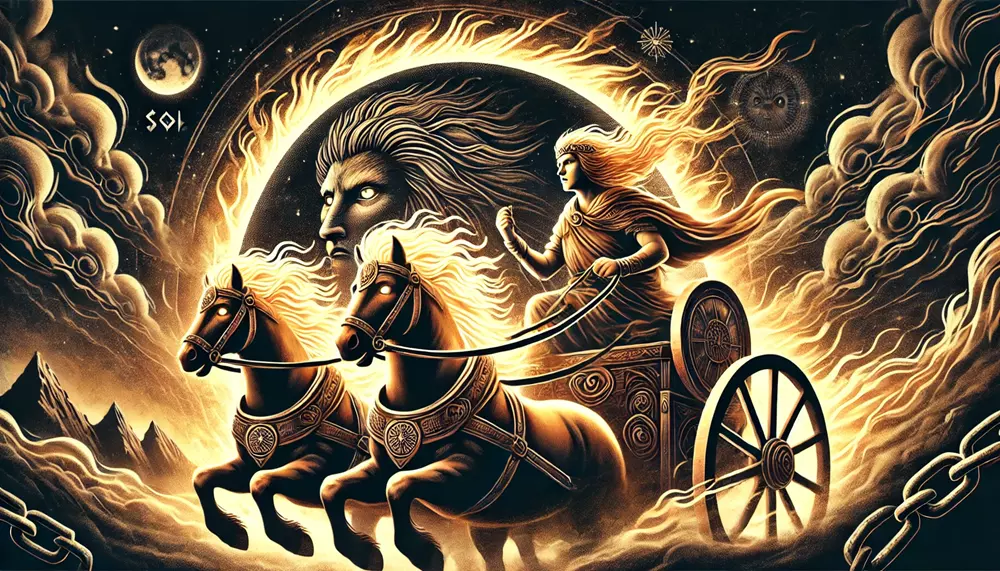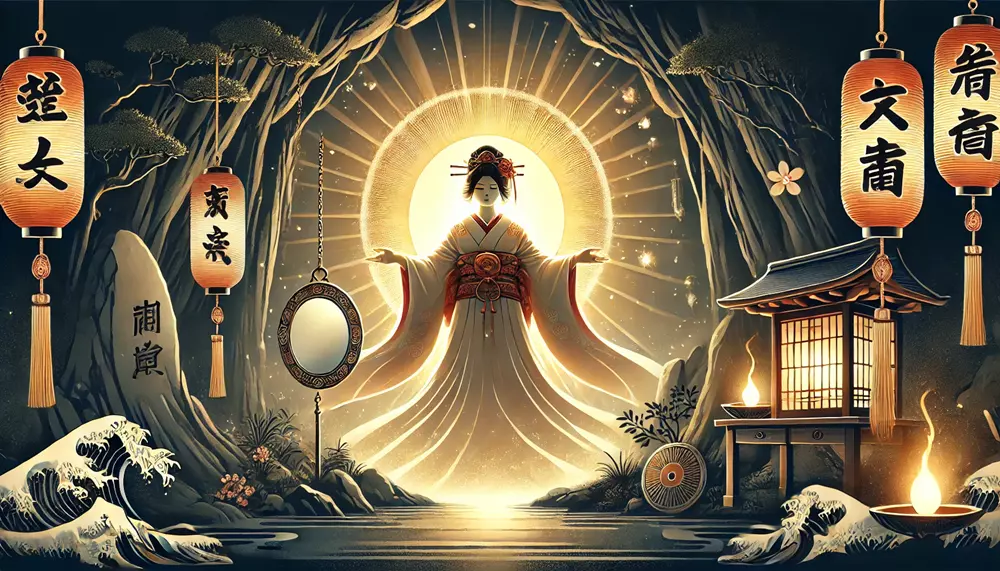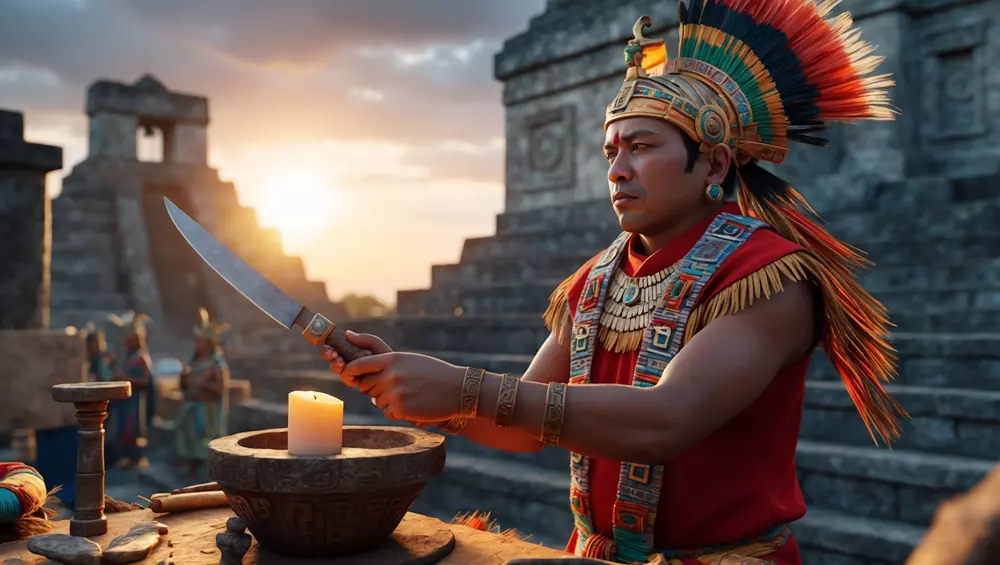The sun and moon have been constants in human life, symbols of light and darkness, order and mystery. Ancient cultures worldwide crafted myths around these celestial bodies, trying to make sense of their powerful presence and cyclical patterns. Across time, the sun often represented life and warmth, while the moon symbolized mystery, femininity, and change. Together, they embody a cosmic balance that ancient societies revered.
These myths reveal more than just stories; they showcase human attempts to understand existence. For many, the sun and moon were seen as divine forces or even gods. In ancient Egypt, the sun god Ra was worshipped as the creator, while in Mesopotamian myths, the moon god Sin represented wisdom and foresight. These myths aren’t just tales; they’re windows into the ancient mind.
Historical Origins of Celestial Myths
The origins of sun and moon myths trace back to humanity’s earliest days, when people looked to the sky for guidance. Ancient societies observed the cycles of these celestial bodies, aligning their beliefs and daily lives with their rhythms. In cultures with harsh climates, like Egypt, the sun was a life-giving force, sustaining agriculture and civilization itself. For the Egyptians, Ra wasn’t just a god but a central figure around whom their understanding of the world revolved.
“Ra rises from the horizon, bringing life to all beneath him.” (Pyramid Texts)

In other parts of the world, the moon played a larger role. In Mesopotamia, the phases of the moon became associated with wisdom and timing, embodied in the moon god Sin. Mesopotamians linked the moon to agricultural cycles, seeing it as a guiding force through darkness.
“Sin’s light pierces the night, offering wisdom to those who wander.” (Enuma Elish, Babylonian creation epic)
These celestial myths were also foundational to religious practices. People crafted rituals around sunrises, sunsets, and full moons, marking these moments as sacred. In India, sun worship remains a vital tradition, seen during the Chhath Puja, where devotees honor the sun god Surya to seek health and prosperity.
The significance of the sun and moon stretched beyond life and death—they became cultural anchors. Each civilization adapted these symbols to reflect their environment and societal needs, forming a unique bond with the cosmos that endures to this day.
Name Meaning and Symbolism
The names and symbolism surrounding the sun and moon offer insights into how each culture perceived these celestial bodies. For many, the sun represented constancy, power, and creation. For example, the Norse goddess Sol, who drove the sun chariot, symbolized life’s eternal cycle, hunted endlessly by a wolf that represented nightfall.
“Sol rides on her path, pursued by the wolf of night.” (Prose Edda, Norse mythology)
In contrast, the moon is often depicted as feminine, linked to cycles of birth, growth, and renewal. In Greek mythology, Selene, goddess of the moon, rides her chariot across the night sky, embodying the cycle of life and death.
“Selene’s silver chariot sails, witness to the mysteries of night.” (Homeric Hymn to Selene)
The symbolism of these names reflects a deeper understanding of life’s balance. In Chinese mythology, the sun and moon are represented as the yin and yang—complementary forces that form the universe’s harmony.
“The sun and moon bring light and shadow, balancing the world’s energy.” (I Ching, ancient Chinese text)

Names also served as markers of reverence. In Aztec culture, the sun was known as Tonatiuh, who needed human blood to rise each day, symbolizing the struggle and sacrifice for survival. Conversely, the moon was Coyolxauhqui, the fallen goddess whose story reminded the Aztecs of sacrifice and regeneration. This duality—sun as sustainer, moon as mystery—formed the backbone of the Aztec worldview.
Across cultures, the sun and moon were more than celestial objects; they were powerful deities and symbols of life’s mysteries. The Egyptian sun god Ra was not just a life-giver but a judge, watching over humanity’s actions. Similarly, the moon’s phases became omens and guides in rituals, as seen in Celtic traditions, where the full moon was believed to amplify spells and ceremonies.
Roles in Creation Myths
In many cultures, the sun and moon are central figures in creation myths, embodying cosmic forces that brought life to the universe. For instance, the Maori of New Zealand believed that the sun and moon emerged from the darkness, creating day and night. The god Tāne separated his parents, Rangi and Papa, the sky and earth, allowing light to fill the world.
“From the dark, Tāne lifted the heavens, and the sun began its journey.” (Māori Creation Myth)
In Egypt, the sun god Ra was believed to have created himself and risen from the primeval waters, bringing life with him. His daily journey across the sky represented the cycle of life, death, and rebirth, a pattern that became central to Egyptian mythology and society.
“Ra rises from the waters of Nun, birthing life into the land.” (Egyptian Pyramid Texts)
Similarly, in Hindu mythology, the sun god Surya embodies the soul of the universe, giving life and light to all beings. His energy sustains the earth and ensures that life continues in an eternal cycle.
“Surya shines, the life-force of all creation, bringing warmth and vitality.” (Rigveda)
These myths underscore the sun and moon’s roles as divine agents in the world’s creation, symbolizing the ongoing relationship between light, life, and cosmic balance.
Life-Giving Forces
Across different mythologies, the sun and moon are often seen as life-giving entities, responsible for sustaining growth and ensuring survival. The Aztecs, for instance, viewed the sun god Tonatiuh as requiring nourishment in the form of human sacrifice to keep the world in balance. Each sacrifice represented an offering of life to sustain cosmic harmony.
“The sun demands life, lest it fall from the sky and darkness consume all.” (Codex Borgia)
In Japanese mythology, the sun goddess Amaterasu is revered as the bringer of light and fertility. Her radiance brings crops to life, and her absence causes darkness and turmoil. Her retreat into a cave, according to legend, plunged the world into chaos until she was coaxed out, restoring life.
“Amaterasu, from your light all things bloom and from your absence, all things wither.” (Kojiki, Japan’s oldest historical record)
In the Norse belief system, the sun and moon are vital forces, pursued by wolves who represent darkness and chaos. Their constant journey symbolizes the ongoing struggle between light and dark, life and death, creating a cycle that sustains the world.
The life-giving aspects of the sun and moon reveal a universal respect for their power and a recognition of their impact on earthly life. They embody both survival and the delicate balance of nature.
Symbolism and Ritual
Throughout history, the sun and moon have not only inspired myths but also become central symbols in rituals across the world. Their cycles—sunrises, sunsets, full moons—provided ancient societies with a sense of rhythm and order, creating sacred moments in their daily lives. The ancient Egyptians, for instance, practiced sunrise and sunset rituals to honor Ra’s journey across the sky, seeing it as a daily battle against darkness.
“Each dawn, Ra battles darkness, rising again to bring light to the faithful.” (Egyptian Book of the Dead)
In Celtic traditions, the phases of the moon guided important agricultural and spiritual practices. The full moon, believed to be a time of heightened energy, was considered ideal for blessings, divinations, and healing rituals. The Celts saw the moon as a bridge between worlds, linking the earthly to the divine.
“Under the full moon’s light, the veil thins, and magic flows freely.” (Carmina Gadelica, Celtic incantations)
In Hinduism, the sun plays a vital role in the Chhath Puja festival, where worshippers honor Surya for health and prosperity. During this festival, people offer water to the rising and setting sun, acknowledging its life-giving powers and seeking blessings for personal well-being.
The Chinese calendar, too, is based on lunar cycles, with festivals like the Mid-Autumn Festival celebrating the moon as a symbol of reunion and harmony. Families gather under the full moon, reflecting on unity and gratitude for the blessings they receive.
“Under the autumn moon, families come together, sharing blessings and stories.” (Mid-Autumn Festival Celebrations)
In these rituals, the sun and moon serve as more than celestial bodies; they are sacred entities that shape human traditions. The symbolism and rituals surrounding them reflect ancient peoples’ reverence for their influence, which they saw as essential to harmony, health, and spiritual connection.
Religion
The sun and moon’s influence on religion and ritual is undeniable, with cultures across the globe integrating their cycles into sacred practices. Ancient Egyptians held daily rites for the sun god Ra, marking his journey from dawn to dusk. Priests would perform rituals to aid Ra’s passage through the underworld each night, symbolizing rebirth.
“Ra’s journey brings light and life, a daily triumph over darkness.” (Egyptian Book of the Dead)
In Mesoamerican cultures, the Aztecs viewed the sun as an entity in need of sustenance, often through sacrificial rituals to ensure its rise each day. They believed the sun god Tonatiuh required human offerings to maintain cosmic balance, emphasizing the connection between sacrifice and survival.
“Without offerings, the sun falters, and darkness threatens all.” (Codex Mendoza, Aztec manuscripts)
In Japan, the sun goddess Amaterasu was worshipped as a life-giving force, integral to the nation’s identity. The emperor, considered her descendant, symbolized divine connection to the sun, reinforcing her importance in state rituals and national culture.
Ancient Persian Zoroastrianism also revered light and fire as manifestations of divine order. The rising sun was seen as Ahura Mazda’s gift, with fire rituals symbolizing purity and protection against darkness.
Scientific & Rational Explanations
Early societies interpreted the sun and moon’s movements with mythology, but scientific explanations eventually emerged. Ancient Greek philosophers began proposing theories about the cosmos that moved beyond divine control. Anaxagoras famously suggested that the sun was a fiery mass and the moon a reflection of light—a revolutionary idea that challenged traditional beliefs.
“The sun, a blazing rock, and the moon, its reflection.” (Anaxagoras’ Theories)
In ancient China, scholars explained solar and lunar eclipses as natural phenomena rather than supernatural omens. The astronomer Zhang Heng described eclipses as the moon obstructing the sun’s light, grounding these events in observation rather than myth.
“The heavens reveal patterns, but shadows are no more than moon and sun in alignment.” (Zhang Heng’s Celestial Theories)
Islamic scholars in the Golden Age of Islam also made strides in astronomy, developing tools to calculate moon phases for religious events like Ramadan. The mathematician Al-Biruni mapped lunar cycles and explained planetary movements, contributing significantly to astronomical knowledge.

Modern science, though it has demystified the cosmos, has yet to erase the symbolic power of the sun and moon. Even with precise scientific explanations, their impact on cultural identity and spiritual practices remains strong.
Modern Beliefs and New Age Interpretations
Today, the sun and moon continue to influence beliefs, especially in the context of New Age spirituality. Modern practitioners view the moon phases as guides for personal growth and introspection. For example, the new moon is often seen as a time for setting intentions, while the full moon is linked to emotional release. These practices bridge ancient ritual with modern mindfulness.
“Under the new moon, plant your hopes; under the full, let go of what weighs you.” (Modern New Age Proverb)
In astrology, the sun represents self-identity and life force, while the moon signifies emotions and intuition. Many people follow these cosmic influences, seeking guidance on personality and compatibility, echoing ancient beliefs about cosmic control over human destiny.
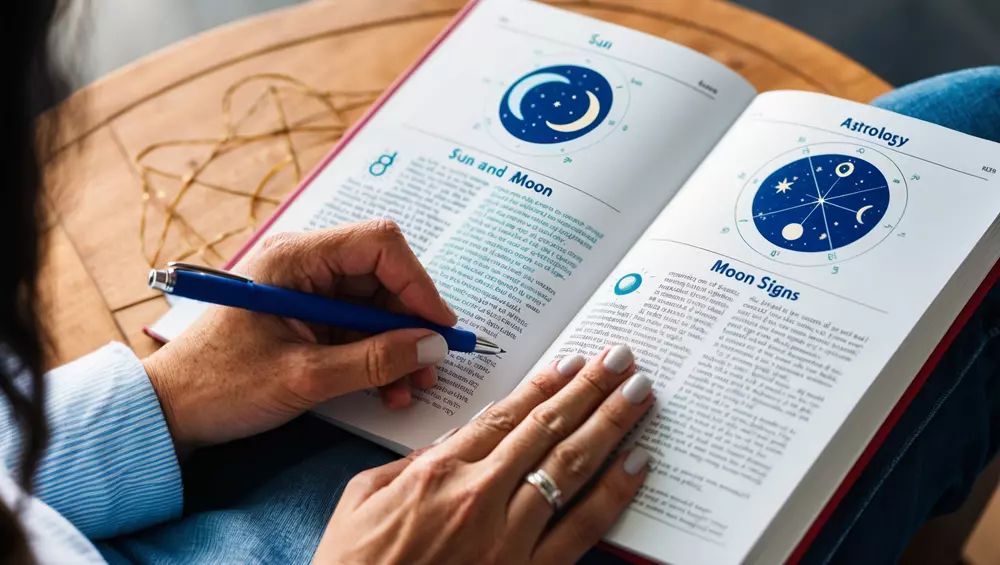
The sun and moon also play roles in Wiccan and Pagan traditions, where they are honored as symbols of balance. Rituals align with the lunar calendar, with each phase believed to enhance spells or provide spiritual clarity. This belief system mirrors the ancient reverence for celestial cycles and their influence on earthly life.
In popular culture, symbols of the sun and moon are prevalent in art, tattoos, and fashion. Celebrities and influencers often incorporate sun and moon imagery as expressions of identity and balance. For instance, Rihanna’s sun-and-moon tattoo sparked interest in celestial symbolism, illustrating the appeal of these symbols in modern aesthetics.
The moon’s phases even affect trends in wellness and productivity. Some companies design moon-themed planners that align daily goals with lunar cycles, suggesting ways to maximize energy and introspection. This blending of modern productivity with lunar phases highlights how the ancient reverence for these celestial bodies endures.
Finally, the sun and moon maintain powerful roles in modern religion and spirituality. In Hinduism, worshippers continue to honor the sun god Surya, while the Jewish calendar relies on lunar cycles for determining sacred holidays. These practices illustrate how the symbols of the sun and moon remain woven into humanity’s spiritual and cultural fabric.
In Modern Culture and Media
The sun and moon continue to captivate us in modern culture, symbolizing balance, duality, and the cosmic forces at play in our lives. From films and books to music and art, these celestial bodies retain their powerful, mythic qualities and are often used to convey deeper themes. This chapter explores how the sun and moon are portrayed today, reflecting both ancient beliefs and new interpretations.
In The Lion King, the “Circle of Life” theme resonates with ancient sun mythology, portraying the sun as a life-giving force that sustains all creatures. The cyclical nature of the sun mirrors the eternal balance between life and death—a concept central to many creation myths.
“Everything the light touches is our kingdom.” (The Lion King)
The Twilight series uses the sun and moon as symbols of contrasting worlds. The sun represents the ordinary, human world, while the moon is tied to the mysterious realm of vampires and werewolves, embodying the allure of the unknown.
In music, Pink Floyd’s The Dark Side of the Moon explores themes of human experience, emotions, and the hidden facets of life, using the moon as a metaphor for psychological depth. Its imagery echoes ancient beliefs that associated the moon with mystery and introspection.
In Sailor Moon, a Japanese anime series, the heroine is tied to the moon, drawing from Shinto and other Japanese beliefs that the moon embodies femininity, intuition, and purity. Her character embodies traits traditionally associated with lunar symbolism.
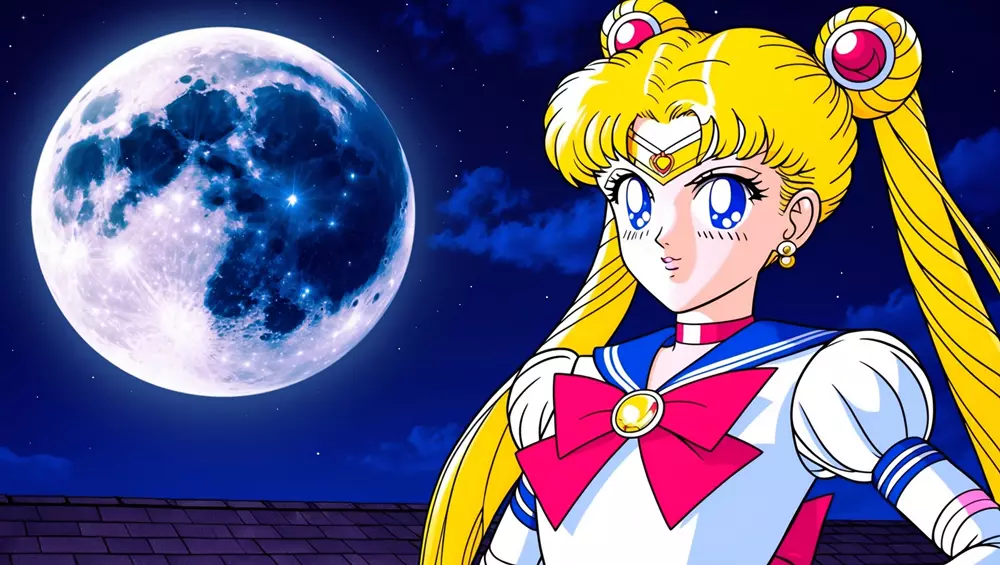
In Marvel’s Thor franchise, Thor is associated with lightning and storms (tied to the sun’s power), while Loki represents chaos and trickery, often aligning with moon symbolism in his mystical abilities. This dynamic between the brothers reflects ancient dualities of order and chaos, light and darkness.
In contemporary art, the sun and moon are frequent motifs. Artists like Vincent Van Gogh depicted the sun and moon in The Starry Night, emphasizing the cosmic wonder and mystery associated with the night sky. The swirling moon evokes feelings of introspection, drawing on age-old beliefs in its emotional influence.
In astrology and horoscopes, the sun and moon continue to influence personality interpretation and life guidance, much like in ancient times. People look to their “sun sign” and “moon sign” for insights on identity and emotional nature, maintaining a direct connection to celestial symbols.
Disney’s Moana showcases the moon’s guiding role. The heroine follows the stars and moon to navigate the ocean, reflecting Polynesian beliefs in celestial navigation and the moon’s power to guide travelers across vast waters.

Even in psychology, the “lunar effect” theory suggests that the moon impacts human behavior, especially during full moons. This concept echoes ancient beliefs in the moon’s power over emotions and the human psyche.
Finally, in modern literature, works like The Sun Is Also a Star use sun symbolism to explore themes of fate, love, and life’s interconnectedness, capturing humanity’s enduring fascination with the sun and its role in our lives.
These examples reflect the timeless appeal of the sun and moon as symbols. Through modern culture, we see how these celestial bodies remain central to our collective imagination, continually inspiring and guiding us across generations. The sun and moon, ever-watchful, keep their place in our stories, offering light, shadow, and a reminder of the mysteries that lie beyond.
Sources
World History Encyclopedia
This source provides detailed explanations on Norse mythology, including the roles of the sun and moon and their influence on culture and myth
Ancient Origins: Norse Sun and Moon Myths
Offers insights on the sun and moon in Norse mythology, discussing cosmic symbolism and the interactions between these celestial bodies
Listverse: Mythological Origins of Day and Night
This article discusses various mythologies’ explanations of day and night, covering cultures like Aztec, Egyptian, and Mesopotamian
Babylonian Mythology Worldwide
Focuses on Mesopotamian mythology and the cultural significance of the sun and moon, including their roles in social and religious life
Ancient Origins: Solar Gods and Chariots
Provides information on solar gods and their associations with chariots, showcasing the universal theme of solar deities across cultures

